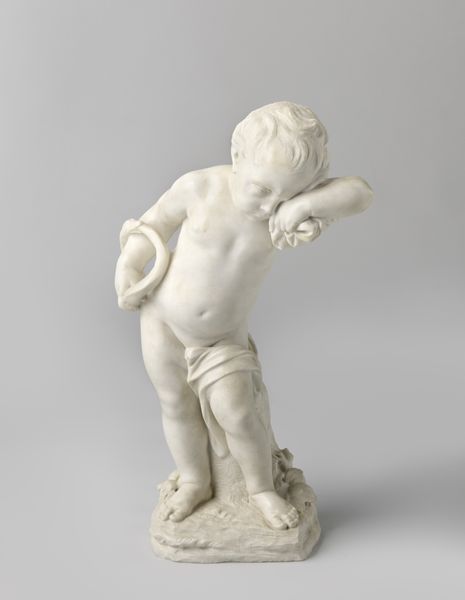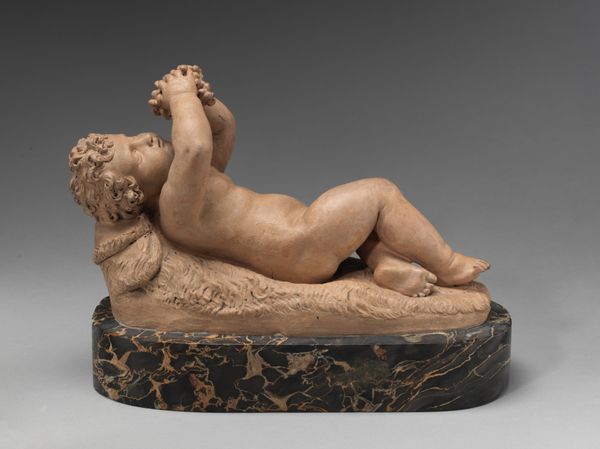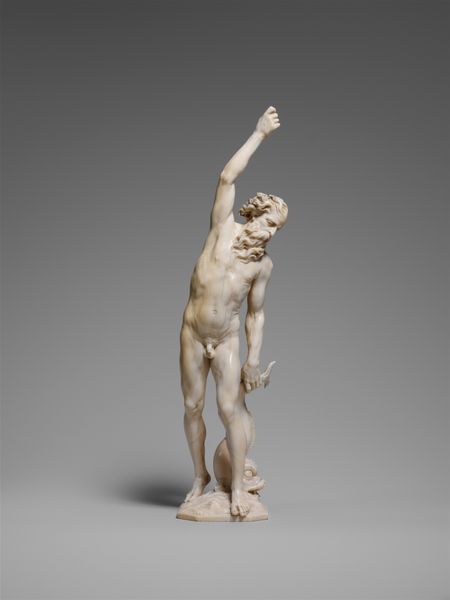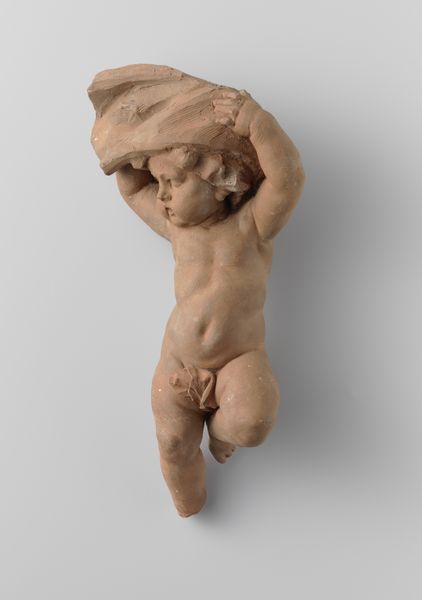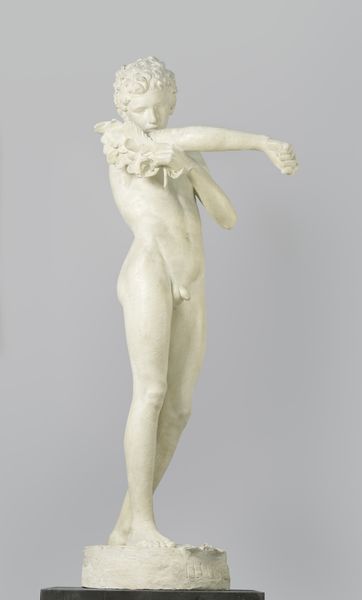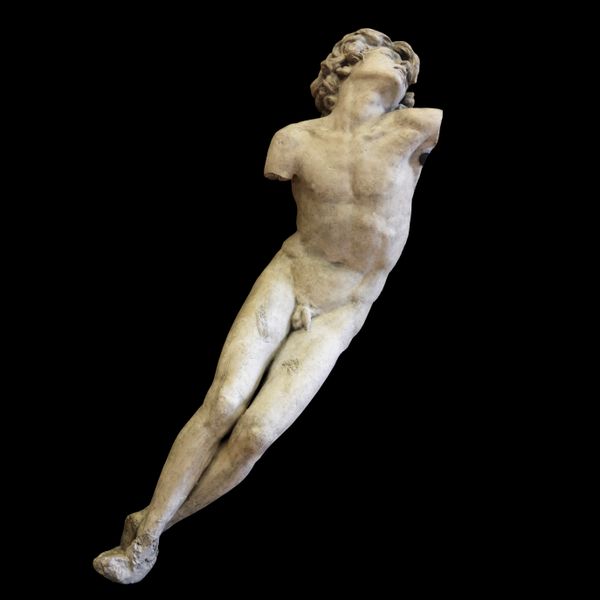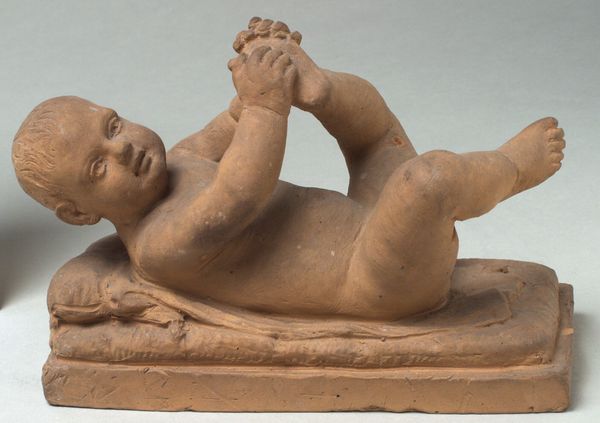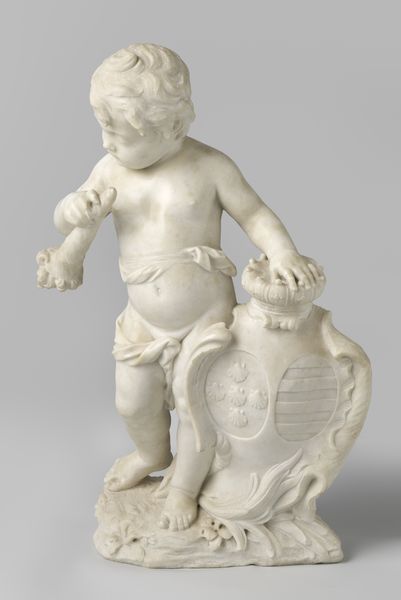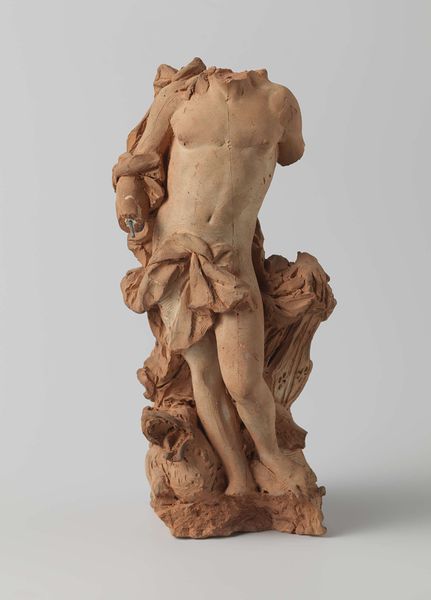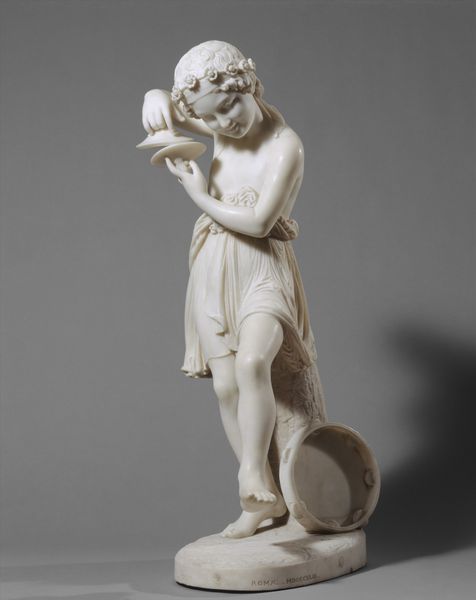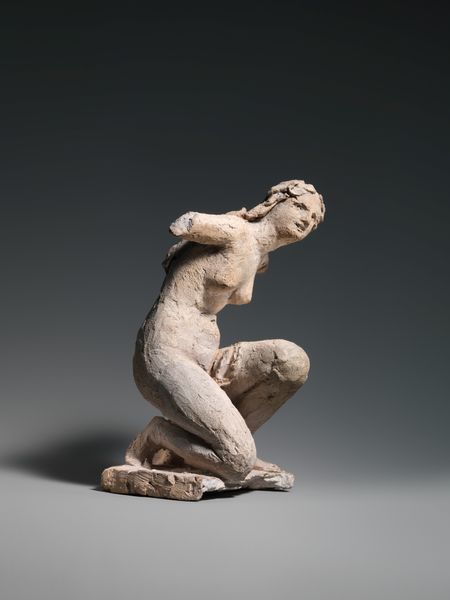
sculpture
#
allegory
#
baroque
#
sculpture
#
sculpture
#
nude
Dimensions: height 26.1 cm, width 12 cm, depth 12.3 cm
Copyright: Rijks Museum: Open Domain
Editor: This is *Study for a Hovering Putto* made by Jan Baptist Xavery sometime between 1735 and 1750. It's a baroque sculpture and it really has a playful innocence to it, doesn't it? I'm struck by the forward movement suggested by the outstretched arm... What do you see in this piece? Curator: You've touched on something lovely – the sheer joy of buoyant potential. This little chap, or "putto," exists in a state of becoming, doesn't he? He's not quite soaring, more like dreaming of it, perpetually on the cusp. It's beautiful how Xavery captured this transitional, hopeful moment. I can almost feel that feeling. What do you make of its possible allegorical intent? Editor: I didn't realize it could be allegorical! I was just so focused on the cherubic figure and the realism... Are you suggesting there might be a deeper meaning beyond the representation of a cute baby angel? Curator: Indeed! In baroque art, putti weren't merely decorative. They often symbolized love, divine inspiration, or acted as messengers. Imagine this little putto, then, not simply floating but carrying a silent promise. Now, what sort of a message do you imagine he is on the way to deliver? Or, is it all, simply an attempt at pure artistic perfection? Editor: I love that idea! Maybe he's bringing a message of hope and joy... it does give the sculpture a richer layer of meaning to consider its historical context and potential symbolism. It changes everything. Curator: Exactly! Sometimes art speaks loudest when we listen with our historical imagination. So glad we had this moment together to reflect on this.
Comments
No comments
Be the first to comment and join the conversation on the ultimate creative platform.
